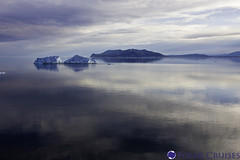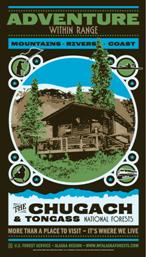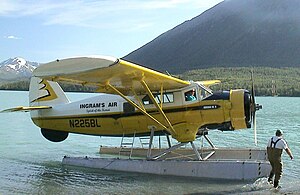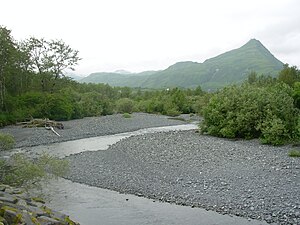Glacier Bay National Park and Preserve Superintendent Susan Boudreau
announced today that a vessel speed limit of 13 knots through the water
will be implemented in the middle of Glacier Bay to protect numerous
humpback whales that have been sighted in this area. During the past
week at least 19 different humpback whales, including a mother/calf
pair, have been observed in this area. This speed restriction will apply
to all vessels from 5AM Friday May 25 until further notice.
As shown on the attached map, the designated 13-knot whale waters in the middle of Glacier Bay are as follows:
- southern boundary: a line from the northern tip of Strawberry Island
to the northern tip of Lars Island, contiguous with the northern extent
of lower Glacier Bay whale waters
- eastern boundary: a line from the northern tip of Strawberry Island
to the western tip of Flapjack Island, then following the motorless
waters boundary to Bear Track Cove, and then following the eastern
shoreline of Glacier Bay north through South Sandy Cove.
- northern boundary: a line drawn from the northern edge of South
Sandy Cove to the northern tip of North Marble Island to the southern
tip of Drake Island and then due west to the mainland shore
- western boundary: follows the western shoreline of Whidbey Passage
from due west of the southern tip of Drake Island to the northern tip of
Lars Island, not including the waters of Fingers Bay or Berg Bay
- Note that a large portion of Whidbey Passage is included in these
whale waters, along with Bear Track Cove, South Sandy Cove, and Spokane
Cove
Since May 15th, Lower Glacier Bay whale waters have been in effect in
the waters extending from the mouth of Glacier Bay (a line between Pt.
Gustavus and Pt. Carolus) to a line drawn between the northern tip of
Strawberry Island and the northern tip of Lars Island, including
Bartlett Cove. This boundary is shown on NOAA nautical charts of Glacier
Bay. All vessels passing through this area are restricted to a speed
limit of 20 knots through the water. In addition, vessels greater than
18 feet in length passing through this area are restricted to a
mid-channel course or 1 nautical mile offshore.
Boaters are reminded that vessels are prohibited from operating
within ¼ nautical mile nautical mile of a humpback whale in Park waters,
including those Park waters outside Glacier Bay proper. In addition,
vessel operators positioned within ½ nautical mile of a humpback whale
are prohibited from altering their course or speed in a manner that
results in decreasing the distance between the whale and the vessel.
Speed and course restrictions in whale waters are intended to reduce the
disruption of feeding humpback whales and to lower the risk of
whale/vessel collisions. Boaters should proceed cautiously in all areas
where whales are present because whales may surface in unexpected
locations, posing a hazard to both the vessel and the whale. Although
humpback whales sometimes tend to be distributed along the shoreline,
boaters should note that whales frequently cross mid-channel as they
move between feeding sites.
Boaters are advised to verify whale waters designations prior to
entering Glacier Bay by telephoning (907) 697-2627 or by contacting
KWM20 Bartlett Cove on marine VHF radio.
Whale waters restrictions are authorized in Glacier Bay National Park
in accordance with Title 36 of the Code of Federal Regulations, Subpart
N, 13.1174.














